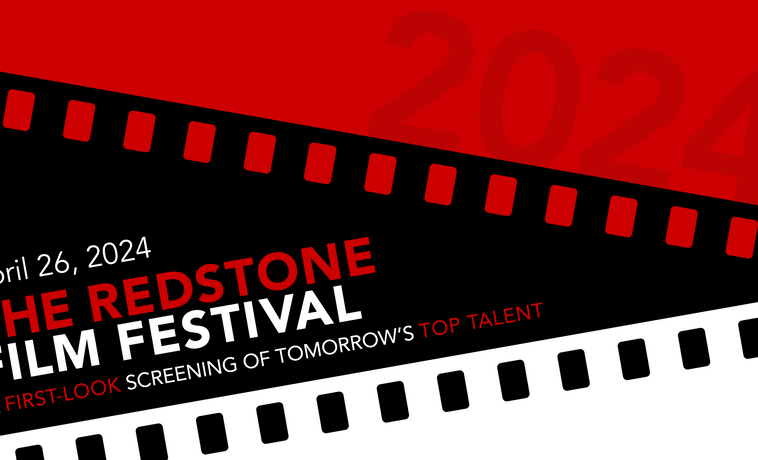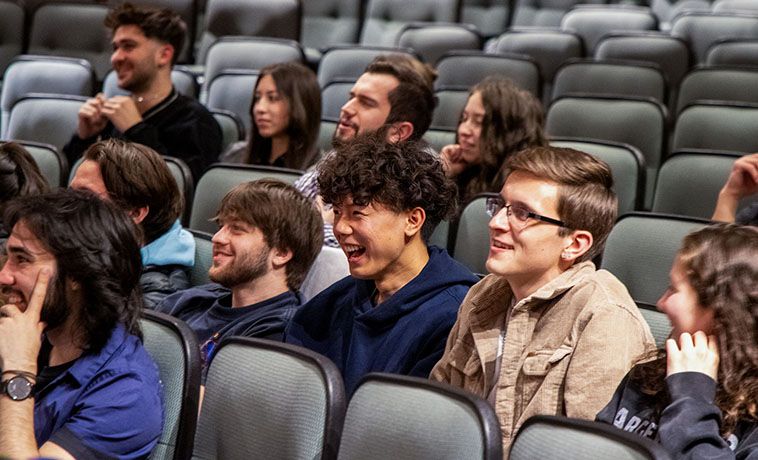COM Gets a New Production Studio
State-of-the-Art Studio

A former storage area for surplus refrigerators and mattresses has been transformed into a production studio that will give students a chance to create their own film sets and to explore the art of cinematography and directing in a way they haven’t been able to before.
Built in 1912 as an automobile dealership, the COM building was “never intended for film and TV work,” says Paul Schneider, a film and television professor and department chair. Prior to the construction of the newly designed studio at 300 Babcock Street, the department shared a 1,200-square-foot space with BUTV10, COM’s student-run television station, but there wasn’t enough room for film and television students to experiment with cinematography and lighting or for directors to work at length with actors. And COM had no space available to build the kind of studio the department envisioned.
Schneider says the new 2,900-square-foot Film & Television production studio represents a breakthrough for the department. Facilities Management & Planning began gutting the space early this fall. The two-month renovation included raising the floor two feet and building shelving and storage. The sprawling room is painted black so light won’t reflect off of floors and walls, and a ventilator was installed to make sure that lights don’t overheat. Speaking of lights, the newly installed lighting grid is “strong enough to hold the weight of an elephant,” says Joel San Juan, a film and television associate professor, who is already using the space for his cinematography and directing classes.
San Juan boasts that BU is one of the first schools in the Boston area with this kind of space. “It means freedom to do much more,” he says. “One of the main things that stopped us bringing our cinematography classes to the next level was the space. Our projects were getting in everyone’s way. Now students can really explore cinematography, play around with different lenses, explore depth and focus. Now, there’s so much freedom for them to try whatever they want.”
Read the full article in BU Today

